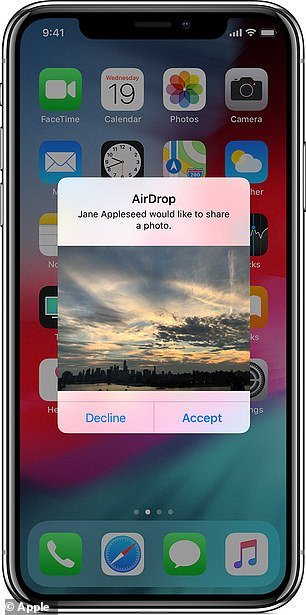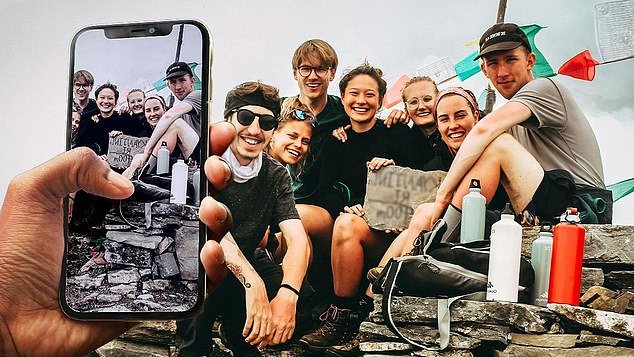Tech expert reveals 5 travel mistakes that set you up for a vacation disaster
Quick travel checklist: Grab an extra phone charger, put your boarding pass on your phone, and bring more snacks than you think you’ll need.
I wish tech advice was that simple. But the consequences are also much worse.
From booking to departure, here are five mistakes that will ruin your holiday – and smart advice for smooth sailing.
A technology expert has revealed five common mistakes people make when traveling – and one of them is using no-name sites to find great deals on flights
1. Buying flights on an unnamed site with a KILLER deal
You search for airline tickets online or answer an email. Overwhelmed by all the sites and apps, you choose the cheapest option.
The site promises a great rate, so you pay for the ticket. You book what appeared to be a confirmed seat and receive an email that you’re all set.
You visit the airline’s main site, enter your details and boom: there’s your reserved seat.
The reserved space runs out two weeks later and your seat evaporates. You find out about this and try to get help from the airline. Usually they can’t do anything for you, because only a reservation has actually been made.
Scammers are great at creating fake apps and sites to scam you. Fortunately, there are signs to look out for that can help you avoid them.
● Check official sources: The Better Business Bureau can be a big help in determining whether a company is legitimate. The agency lists real companies; if you can’t find the one you’re working with, the best thing to do is run away.
● Online reviews and ratings: Read online reviews and ratings on sites like TripAdvisor, Yelp, or Google. Extremely positive and negative reviews can be fake. Look for a balance between reviews and consistent themes.
● Accreditation and Licensing: Many legitimate travel agencies are members of recognized industry organizations such as the American Society of Travel Advisors (ASTA) or have IATA (International Air Transport Association) accreditation. Check the login details on their site.
● Transparent pricing: Legitimate sites are clear and honest about all costs. Beware of sites with hidden fees or that don’t explain costs clearly.
● Secure Payment Options: Reputable travel sites offer secure, well-known payment options. Be wary of sites that only allow bank transfers or money orders.
2. Charge at a public charger at the airport
A public charging station feels like a godsend when your battery is dead and you don’t need to plug in anywhere, but it’s surprisingly easy to tamper with.
With just a USB cable, a cybercriminal can install malware or suck data from any device that plugs in for charging.
If you’re desperate for juice, you can safely use a USB connection… with the right cable. Bring a rechargeable cable for travel. They are cheap, compact and do not allow data transfer.

Do not keep your AirDrop public while traveling
And if your phone is a few years old or newer, you’ll be asked if you want to “trust” or “share data” with this device when you plug it in. Always say no when you travel!
These options enable data communication between your phone and the charging hardware, which could be infected malware.
Choose the ‘Charge Only’ option. If that option isn’t available, keep walking.
3. Leave AirDrop on public
Keyloggers track everything you type, and criminals like to pass them on using Apple’s AirDrop feature.
Do not accept drops from strangers during the flight.
On your iPhone:
● Go to Settings > General > AirDrop.
You can set your phone to reject all AirDrop requests, allow only from contacts, or allow from everyone. (The latter is not the best idea for travel.)
On a Mac:
● Click Control Center in the menu bar (it’s the icon with two toggles).
● Click AirDrop. From here you can turn it on or off and choose who can send items.
4. Handing your phone to a stranger to take a photo
My friend Mary was on holiday in Rome with her 14-year-old daughter.
They stopped to take selfies and a seemingly friendly stranger – a man in his 30s – offered to take their photo.
Mary punched in her PIN, handed over the phone and the so-called Good Samaritan grabbed it and ran.

One of the biggest mistakes is handing over your smartphone to a stranger while on vacation. The Good Samaritan may run off with your phone
Your phone is much more valuable than just the amount someone might sell it for. (Although that’s a pretty tempting amount if you have a newer phone.)
Think of all the bills attached to it: your bank and other financial apps, email inbox, and private text messages containing who knows what.
There are a few simple ways you can protect yourself:
● Hide your PIN when you are in public. To open your phone in front of people, use Face ID or your fingerprint.
● Don’t use an easy PIN either. Not four digits! Make it as long as you can remember.
● If you don’t want to use Face ID, use a passcode with numbers and letters if your phone allows it.
5. Forgetting to check roaming rates/service
Ouch, your sore wallet. Before you hit the road, sea or air, log on to your mobile provider’s website or call them to find out exactly what you’re entitled to when you travel. You can only get service in certain countries, at certain times, or up to a certain limit.
Know this in advance, and not once you are confronted with the bill. Depending on what you find, you may be better off getting a travel SIM card or eSIM card.
